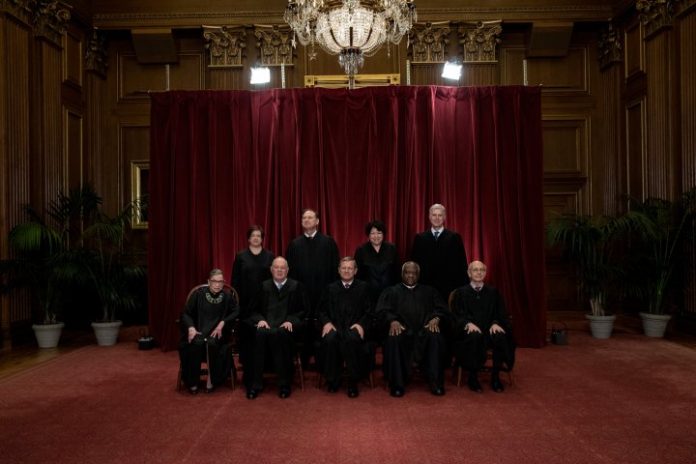
The Supreme Court agreed with the Trump administration Tuesday and put on hold a lower-court decision that would have allowed more refugees to enter the country.
The court issued a one-paragraph statement granting the administration’s request for a stay of the latest legal maneuvering involving the president’s executive order on immigration. There were no recorded dissents to the decision.
At issue is whether the president can block a group of about 24,000 refugees, who have assurances from sponsors, from entering the United States. A panel of the U.S. Court of Appeals for the 9th Circuit had interpreted a Supreme Court directive this summer to mean that such refugees should be allowed in, but the government objected.
The latest court actions are part of a complicated legal battle that began in January when President Donald Trump issued his first version of an entry ban. The Supreme Court is to consider the merits of his actions at a hearing Oct. 10.
The current case grows out of a Supreme Court decision in June that approved a limited version of a presidential order that temporarily blocked refugees and citizens of six majority-Muslim countries.
The justices said Trump could impose a limited version of the measure, but not on a person with a “bona fide” connection to the United States, such as having family members here, a job offer or a place in a U.S. university.
It is the interpretation of a “bona fide” connection to the United States that is being debated.
The government initially declined to include grandparents and other members of the extended family as meeting that standard, as well as refugees with formal assurances. A federal district judge said the government’s reading was too broad and stopped it.
The Supreme Court largely upheld that ruling in July, although it put on hold the portion dealing with refugees.
Last week, a panel of the 9th Circuit Court of Appeals weighed in, deciding that the administration could block neither grandparents nor refugees with assurances.
The Justice Department this week asked the Supreme Court to step in again – although only to block refugees, not grandparents and other relatives beyond the nuclear family. Even those refugees with formal assurances from a resettlement agency lack the sort of connection that should exempt them from the ban, the Justice Department argued in its new filing to the Supreme Court.
“The absence of a formal connection between a resettlement agency and a refugee subject to an assurance stands in stark contrast to the sort of relationships this court identified as sufficient in its June 26 stay ruling,” Acting Solicitor General Jeffrey B. Wall wrote in his filing.
“Unlike students who have been admitted to study at an American university, workers who have accepted jobs at an American company, and lecturers who come to speak to an American audience, refugees do not have any free-standing connection to resettlement agencies, separate and apart from the refugee-admissions process itself, by virtue of the agencies’ assurance agreement with the government,” the filing said.
In response, the state of Hawaii, which is challenging the travel ban, told the Supreme Court that the government’s argument made no sense.
“Refugees with formal assurances are the category of foreign nationals least likely to implicate the national security rationales the government has pointed to in the past,” wrote Washington lawyer Neal Katyal, who is representing Hawaii.
“By the government’s own admission, these refugees have already been approved by the Department of Homeland Security. It is therefore exceedingly unlikely that they represent a security threat.”
Time is beginning to become a factor in the broader fight over Trump’s travel ban. The measure was supposed to have been temporary – lasting 90 days for citizens of the six affected countries, and 120 days for refugees. If the measure is considered to have taken effect when the Supreme Court allowed partial implementation, the 90 days will have passed by the time the justices hear arguments Oct. 10, and the 120 days are very likely to have passed by the time they issue a decision.
Some deadlines for reports have also seemingly passed. The Department of Homeland Security secretary was – within 20 days of the order taking effect – to have given Trump the results of a worldwide review determining what information was necessary from other countries to vet travelers. The countries that were not supplying adequate information were then to be given 50 days to begin doing so, and after that, top U.S. officials were to give Trump a list of countries whose citizens would be recommended for inclusion in a more permanent travel ban.
A Homeland Security spokesman said that a report was delivered to the White House in early July on the results of the review and that officials then went about assessing each country on the information it provided
He said Homeland Security officials were “evaluating the information received and will provide a report to the president in the coming weeks.”
(c) 2017, The Washington Post · Robert Barnes, Matt Zapotosky
{Matzav.com}











